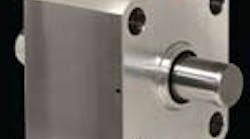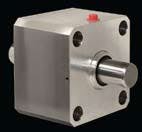Amlok RLN power-off rod locks for holding applications feature anodized aluminum construction, a heavy-duty clamp
system, and power-off clamping. They use dry-filtered air and have a release pressure from 60 to 160 psi. They mount to standard NFPA cylinders or can be stand-alone using MXO, MF1, MF2, MS4, and MS1 mounting configurations and fit rod diameters ranging from 0.625 to 1.75 in., and cylinder bores from 1.5 to 6 in. Holding forces range from 200 to 2650 lb.
Advanced Machine & Engineering Co., 815-316-5277, www.ame.com


